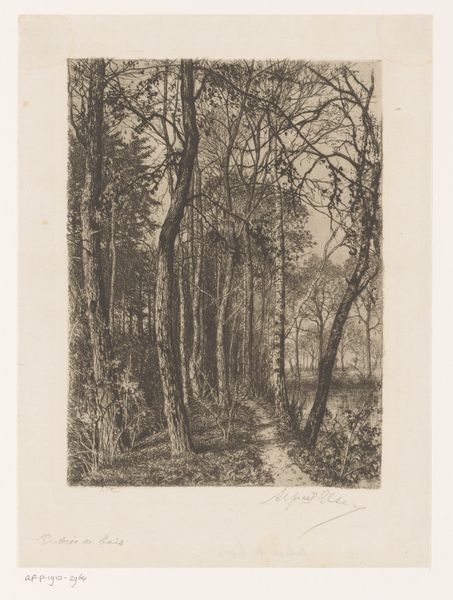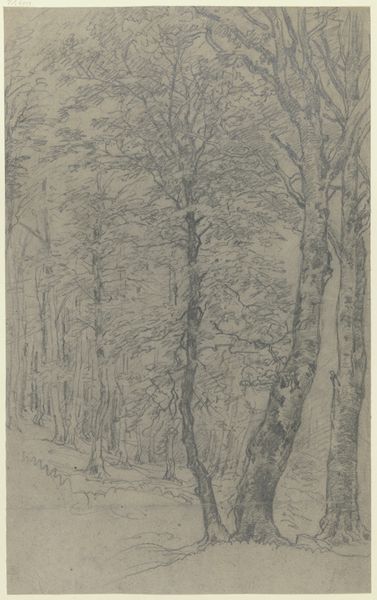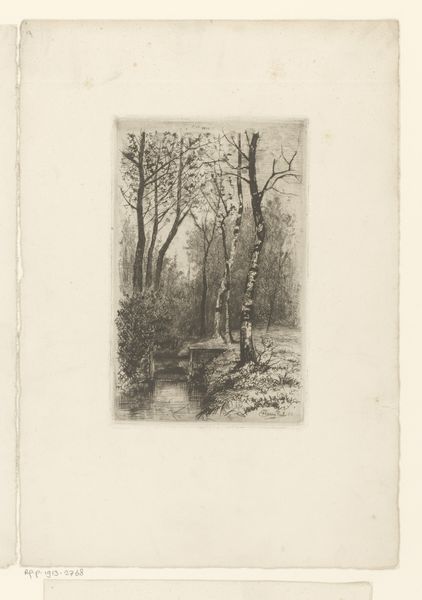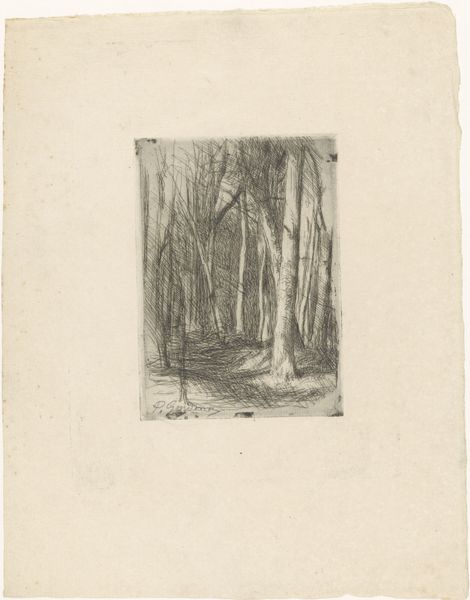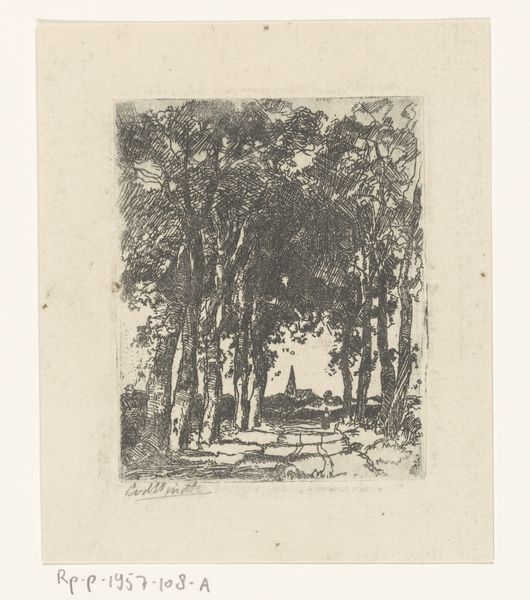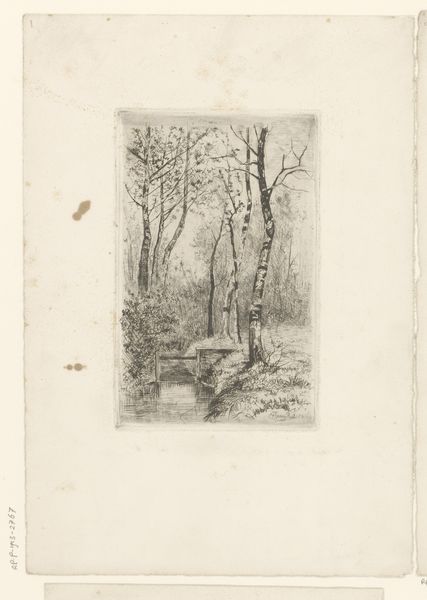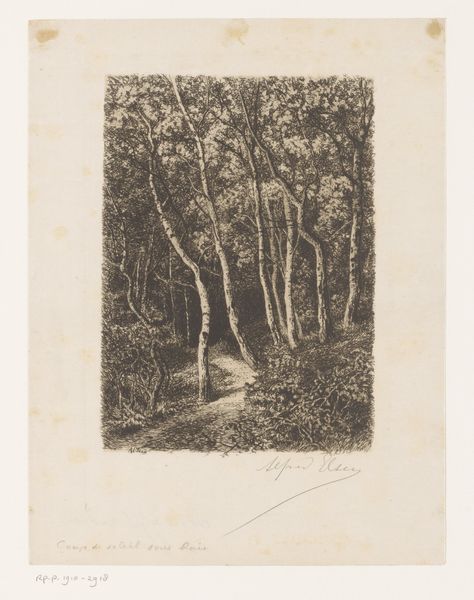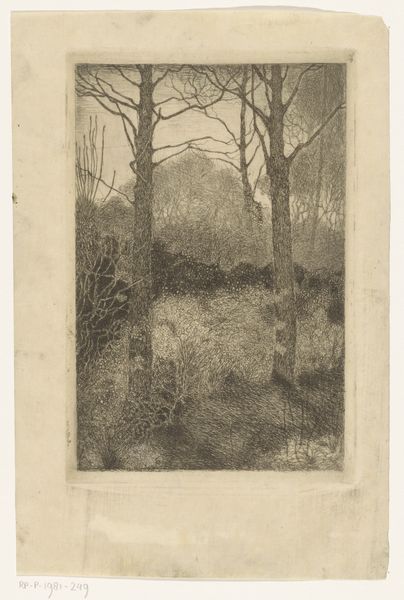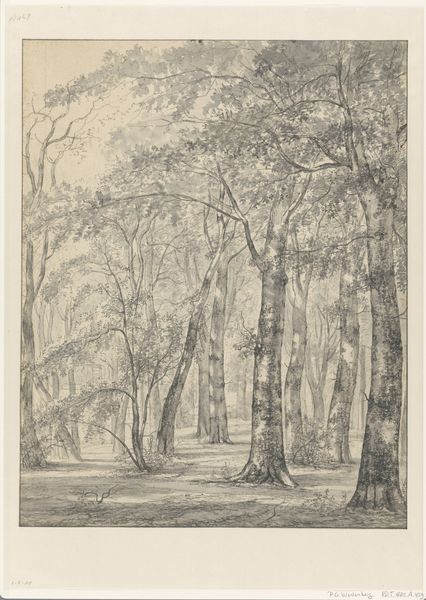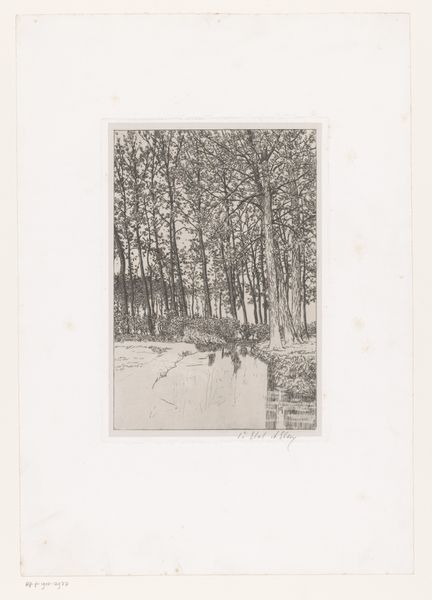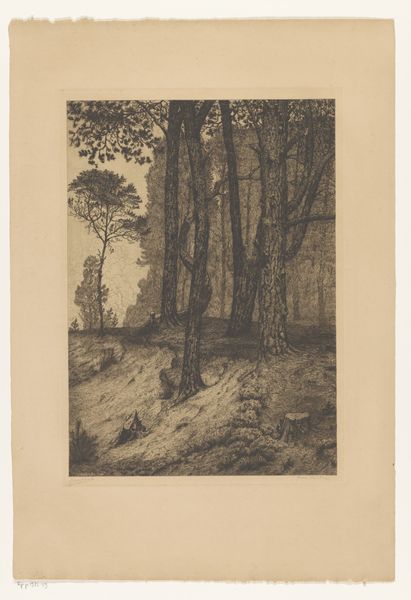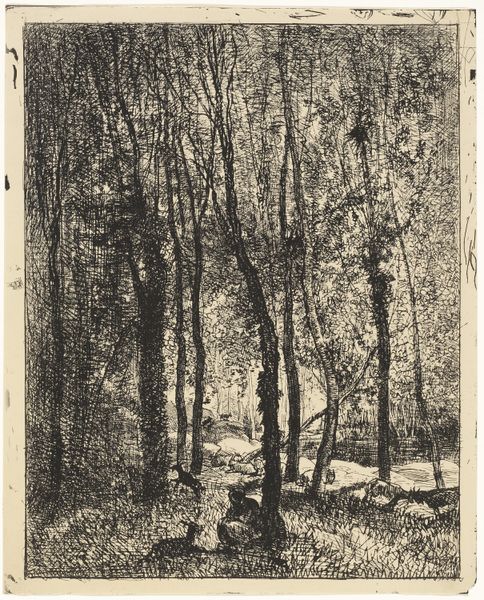
Dimensions: height 132 mm, width 77 mm
Copyright: Rijks Museum: Open Domain
Editor: This is Willem de Zwart's "Besneeuwd laantje" from around 1896, done with etching. It's a rather somber depiction of a snowy lane. What strikes me is how the etching technique, with all its lines, really emphasizes the starkness of the winter landscape. What do you see in it? Curator: Well, for me, it's all about understanding the labour that goes into an etching like this. Look at the fine network of lines, each one carefully incised into the metal plate. It speaks to the hours of focused work, a skilled artisan meticulously building up the image through physical means. What kind of acid was used, and how was the biting process controlled to achieve these subtle tonal variations? This is critical. Editor: I see what you mean. It's easy to forget the labor behind the image when we just look at the final product. The process of etching does seem quite demanding. Does the printmaking medium factor into why the landscape appears in grayscale? Curator: Absolutely! The decision to use etching directly influences the aesthetic. It also tells us something about accessibility and consumption. Was this meant for a wide audience, or was it targeting a more specialized, perhaps bourgeois, art market willing to pay for original prints? The choice of etching, compared to a painting for instance, impacts the artwork's entire social life and consumption. Editor: That's fascinating, how the choice of material influences its market and cultural value! I guess it's about going beyond the pretty picture and thinking about the labor and socioeconomic context behind it. Curator: Precisely. By examining the materials, the methods of production, and distribution, we gain a much deeper appreciation for the complexities of art. This work offers not only an image, but reveals how materials, economy, and consumption intertwine with aesthetics to communicate specific meaning within culture.
Comments
No comments
Be the first to comment and join the conversation on the ultimate creative platform.
